Search results for 'SELECT * FROM MM_MOVIE;'
-
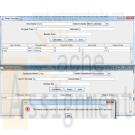
PRG 421 Week 2 GUI Components Program
$20.00PRG 421 Week 2 GUI Components Program
Learn More
For this assignment, you will choose from the following options:
Option 1: Retail Calculator
A retailer would like a calculator to indicate sale prices when he marks items down at various percentages.
Design, implement, test, and debug a GUI application that allows the retailer to enter the item’s name, the item’s original price, and the percentage discounted.
• The application should include a Calculate button that, when pressed, computes and displays the sale price in a label or text field.
• The program should allow the retailer to enter any number of items in this manner.
• Include an Exit button to end the execution of the application.
• The program should allow the user to select a department from a menu. You may create the menu as a true menu, a JComboBox, or radio buttons.
• Create your own list to populate the menu: men’s clothing, women’s clothing, house wares, and so forth.
• Include at least five departments.
• Create a JTextArea or a JTable to display each of the following for each item entered:
o Item name
o Department
o Original price
o Sale price
Option 2: Payroll Application
An employer is looking for an easier way to track employee pay.
Design, implement, test, and debug an application to compute an employee’s weekly pay. If the employee works more than 40 hours a week, the employee earns 1.5 times the basic hourly pay for any time worked over 40 hours. The program should allow the user to input the employee’s name, the number of hours worked, and the hourly rate.
• The application should include a Calculate button that, when pressed, computes and displays the total pay in a label or text field.
• The program should allow the user to enter information for any number of employees in this manner.
• Include an Exit button to end the execution of the application.
• The program should allow the user to select the employee’s department from a menu. This can be a standard menu, radio buttons, or a JComboBox.
• Create your own list to populate the menu: Marketing, IT, Accounting, and so forth.
• Include at least five departments.
• Validate the employee’s hourly wage and hours worked according to the following rules:
The hourly wage must be at least $6 per hour and cannot be more than $150 per hour. It must be numeric.
The hours worked must be a numeric value greater than or equal to 0 and cannot be greater than 60.
• Create a JTextArea, JTable, or other form of a table to your application and use that to list the following for every employee:
o Name
o Department
o Weekly salary
Add each employee to the list after you have computed that employee’s salary. -

PRG 421 Week 3 Contact Information Program
$15.00PRG 421 Week 3 Contact Information Program
Learn More
This is a two-part assignment.
Part 1
Design, implement, test, and debug a program with a JFrame that allows the user to enter a series of contacts’ names, ages, e-mail addresses, and cell phone numbers, and creates a file from the entered data. Validate the age entry to ensure that it is numeric and between 0 and 120. Include information for three to five contacts.
Part 2
Design, implement, test, and debug a program that reads the file you created by the list in Part 1 and displays the records in a JFrame. You may either display all entries in the list at once or display them one at a time; the user interface is up to you. Protect against not being able to open the file.
Submit the .java source files. -
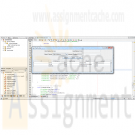
PRG 421 Week 3 Learning Team Fundraiser Initial program
$12.00Learning Team Instructions Fundraiser Program
Learn More
A city is sponsoring a run to support local charities and would like an application to track the pledges. The result will be a database that holds data on individuals, total pledges obtained, and the charity for which the donation is designated.
Design and implement a GUI-based program to accept a participant’s name, the amount pledged, and the designated charity’s name. The program will store these data for later retrieval.
PRG 421 Week 3 Learning Team Initial program
Create a GUI-based program to accept name of donor, name of charity, and amount of pledge from the user.
Display a list of entries in a JTextArea or JTable.
Submit the .java source file for this program. -
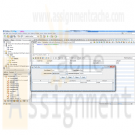
PRG 421 Week 5 Learning Team Fundraiser Program Connect to a Database
$15.00Learning Team Instructions Fundraiser Program
Learn More
A city is sponsoring a run to support local charities and would like an application to track the pledges. The result will be a database that holds data on individuals, total pledges obtained, and the charity for which the donation is designated.
Design and implement a GUI-based program to accept a participant’s name, the amount pledged, and the designated charity’s name. The program will store these data for later retrieval.
PRG 421 Week 5 Learning Team Connect to a Database
Write a program to create a database from the data in the sequential file you created in Week Four.
Modify the GUI to connect to this database and add entries to it and read entries from it. Entries read from the database should be displayed in the JTextArea or JTable.
Test and debug this final program.
Submit the .java source file or files. -
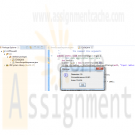
CIS355A iLab 1 ShowEscapeSequences Circle and PracticeArithmeticOperators Programs
$15.00CIS355A iLab 1 ShowEscapeSequences Circle and PracticeArithmeticOperators Programs
In this lab you will learn how to use the Java Software Development Kit (SDK) with the Eclipse programming tool. In addition, you will create three simple Java programs.
Deliverables
Program files for each of the following three programs.
1. ShowEscapeSequences.java
2. Circle.java
3. PracticeArithmeticOperators.java
At the beginning of ALL your programs, put a comment box that includes the program name, your name, and a brief description of the program.iLAB STEPS
STEP 1: ShowEscapeSequences (10 points)
Write a Java program named ShowEscapeSequences.java that displays the following.
I really like
CIS355A
"Business Application Programming with Lab using JAVA"STEP 2: Circle (15 points)
Write an application called Circle.java that inputs from the user the radius of a circle as an integer and prints the circle’s diameter, circumference, and area. Use the example program and GUI technique message dialog box shown in the Week 1 Lecture.
Use the following formulas.
diameter = 2 * radius
circumference = 2 * Math.PI * radius
area = Math.PI * radius * radius
Use the predefined constant Math.PI for your calculation. This constant is more precise than the value 3.14159. Class Math is defined in the java.lang package so you do not need to import it.STEP 3: PracticeArithmeticOperators (15 points)
Learn More
Write an application called PracticeArithmeticOperators.java that asks the user to enter two numbers. The program is to convert these numbers from String to type int and then print in a tabular format the sum, the difference, the product, and the quotient of the two numbers entered. Use the example program shown in the Week 1 Lecture. For example, if the user enters 25 and 5, the following should be displayed.
Operation Result
25 + 5 30
25 – 5 20
25 * 5 125
25 / 5 5 -
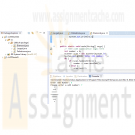
CIS355A iLab 2 Largest Palindrome and Diamond Programs
$15.00CIS355A iLab 2 Largest Palindrome and Diamond Programs
In this lab you will create programs that use control structures and user-defined methods.
Deliverables
Program files for each of the following three programs.
1. Largest
2. Palindrome
3. Diamond
At the beginning of ALL your programs, put a comment box that includes the program name, your name, and a brief description of the program.iLAB STEPS
STEP 1: Largest (10 points)
Write a Java application program called Largest.java that inputs a series of 10 single-digit numbers and determines and prints the largest of the numbers. Except main() method, no other user-defined method is required. Your program should use at least the following three variables
1. counter: A counter to count to 10 (that is, to keep track of how many numbers have been input and to determine when all 10 numbers have been processed);
2. number: The current digit input to the program; and
3. largest: The largest number found so far.
When each number is entered, make sure it is a single digit number, that is 0 to 9.STEP 2: Palindrome (15 points)
A palindrome is a sequence of characters that reads the same backward as forward. For example, each of the following five-digit integers is a palindrome: 12321, 55555, 45554, and 11611. Write an application called Palindrome.java that asks the user to enter in a five-digit integer and determines whether it is a palindrome. If the number is not five digits long, display an error message dialog indicating the problem to the user. When the user dismisses the error dialog, allow the user to enter a new value.
Your program will have the following four methods
1. main() method, which controls the execution of the program;
2. retrieveInput() method, which prompts and retrieves the input values;
3. check() method, which determines whether it is a palindrome; and
4. display() method, which displays the result.STEP 3: Diamond (15 points)
Learn More
Write a program called Diamond.java that uses a method diamondOfAsterisks() that displays a diamond (the row number of a diamond must be odd) of asterisks whose row is specified in an integer parameter row. For example, if the user enters a 7, then the diamond will have seven rows and the method will display the pattern of asterisks. Below is an example of the diamond displayed when 7 is entered.
*
***
*****
*******
*****
***
* -
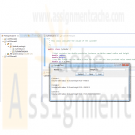
CIS355A iLab 3 Cylinder and Date Java Programs
$15.00CIS355A iLab 3 Cylinder and Date Java Programs
In This lab you will create two programs that use classes and methods.
Deliverables
Program files for each of the following two programs
1. Cylinder
2. DateiLAB STEPS
STEP 1: Cylinder
Create a class called Cylinder.java that contains two double-precision instance variables named radius and height. The class should include a constructor that initializes the radius and height variables. Also, you need a class method named volume() that returns the volume of a Cylinder object. The volume of a cylinder is given by its radius squared times its height times Pi (radius * radius * height * Math.PI). You can either use the value 3.1416 for Pi or use the Java provided value named Math.PI.
Write a class called CylinderTest.java and declare an array of three Cylinder objects to call the methods you declared in the Cylinder class. Make sure that all class methods are called from main(). Have main() display the value returned by volume() and verify the returned value by hand calculations (paper/pencil). Prompt the user to enter the values for the radius and height of each Cylinder object in the array.
Learn More
STEP 2: Date (20 points)
Create a program called Date.java to perform error-checking on the initial values, for instance: fields month, day, and year. Also, provide a method nextDay() to increment the day by one. The Date object should always remain in a consistent state.
Write a program called DateTest.java that prompts the user to enter the month, day, and year as numeric values. This program then creates a Date object using the Date class you just created and tests the nextDay() method. This can be done in a loop of 40 iterations: the Date object calls the nextDay() method and prints the date during each iteration of the loop. This loop is to illustrate that the nextDay() method works correctly. Test the following cases:
a. Incrementing into the next month, for example, use date: 02/28/2011
b. Incrementing into the next year, for example, use date: 11/27/2011
c. Incrementing into the next month in a leap year, for example, use date: 02/28/2012
Sample Program Output:
Checking increment
Date object constructor for date 11/27/2011
Incremented Date:11/28/2011
Incremented Date:11/29/2011
Incremented Date:11/30/2011
Day 31 invalid. Set to day 1.
Incremented Date:12/1/2011
Incremented Date:12/2/2011
...
Incremented Date:12/30/2011
Incremented Date:12/31/2011
Day 32 invalid. Set to day 1.
Incremented Date:1/1/2012
Incremented Date:1/2/2012
Incremented Date:1/3/2012
Incremented Date:1/4/2012
Incremented Date:1/5/2012
Incremented Date:1/6/2012 -
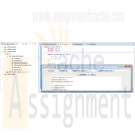
CIS355A iLab 4 InheritanceTest DayGui and OfficeAreaCalculator Java Programs
$15.00CIS355A iLab 4 InheritanceTest DayGui and OfficeAreaCalculator Java Programs
In this lab, you will create one project that uses inheritance and two simple Graphical User Interfaces (GUI) programs.
Deliverables
Program files for each of the following three programs
1. InheritanceTest
2. DayGui
3. OfficeAreaCalculatoriLAB STEPS
STEP 1: InheritanceTest (20 points)
Write a program called InheritanceTest.java to support an inheritance hierarchy for class Point-Square-Cube. Use Point as the superclass of the hierarchy. Specify the instance variables and methods for each class. The private variable of Point should be the x-y coordinates. The private data of Square should be the sideLength. The private data of Cube should be depth. Each class must provide applicable accessor, mutator, and toString() methods for manipulating private variables of each corresponding class. In addition, the Square class must provide the area() and perimeter() methods. The Cube must provide the area() and volume() methods.
Write a program that instantiates objects of your classes, ask the user to enter the value for x, y, and sideLength, test all instance methods and outputs of each object’s perimeter, area, and volume when appropriate.STEP 2: DayGui (10 points)
Write a program called DayGui.java that creates a GUI having the following properties
Object Property Setting
JFrame Name Caption Layout mainFrame Messages FlowLayout
JButton Name Caption Mnemonic cmdGood Good G
JButton Name Caption Mnemonic cmdBad Bad B
Add individual event handlers to your program so that when a user clicks the Good button, the message "Today is a good day!" appears in a dialog box, and when the Bad button is clicked, the message "I'm having a bad day today!" is displayed. The following tutorial shows you much of the code solution. Feel free to use the tutorial, but make changes so that you are not simply copying the tutorial code for your entire solution. To make this different from the tutorial, change the colors of the buttons and panel. Also, add this application to a tabbed pane along with the program you will complete in the next step, Step 3. The following tutorials will likely be useful as you work to complete this step:
• JTabbedPane
• Tutorial to Write Your First GUISTEP 3: OfficeAreaCalculator (10 points)
Learn More
Write a program called OfficeAreaCalculator.java that displays the following prompts using two label components
• Enter the length of the office:
• Enter the width of the office:
Have your program accept the user input in two text fields. When a button is clicked, your program should calculate the area of the office and display the area in a text field with a label of Area. This display should be cleared whenever the input text fields receive the focus. A second button should be provided to terminate the application (Exit button).
The following tutorial shows you much of the code solution. Feel free to use the tutorial, but make changes so that you are not simply copying the tutorial code for your entire solution. To make this different from the tutorial, change the colors of the panel. Also, add this application to the same tabbed pane (see the JTabbedPane tutorial) as the application you built in Step 2, the DayGui application.
• Office Area Calculator Tutorial -
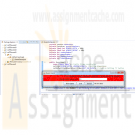
CIS355A iLab 5 GuessGame and Text File I/O Java Programs
$15.00CIS355A iLab 5 GuessGame and Text File I/O Java Programs
In this lab you will create a single program that creates and reads a sequential file. All outputs must be GUI-based without using JOptionPane.
Deliverables
Program files for each of the following two programs
1. GuessGame
2. Text File I/OiLAB STEPS
STEP 1: GuessGame
Write a program named GuessGame.java that plays the game “guess the number” as follows: Your program chooses the number to be guessed by selecting an integer at random in the range 1–1000. The program then displays the following in a label.
I have a number between 1 and 1000 -- can you guess my number?
Please enter your guess: ____________________
A JTextField should be used to input the guess. A JButton must be provided to allow the user to press each time a guess is entered. As each guess is input, the background color should change to either red or blue. Red indicates that the user is getting warmer, and blue indicates that the user is getting colder. A JLabel should display either Too High or Too Low to help the user zero in on the correct answer. When the user gets the correct answer, Correct! should be displayed, and the JTextField used for input should be cleared and changed to be uneditable. Also, a JButton should be provided to allow the user to play the game again. When the New Game JButton is clicked, a new random number should be generated and the input JTextField changed to be editable. A JButton must be provided to allow the user to exit the application. Also provide a count of the number of guesses the user entered when the correct number is guessed.STEP 2: Text File I/O (20 points)
Learn More
Write a program called TextFileIO.java to create a file named numbers.dat. Then create an algorithm that writes all even numbered integers from 1 to 100, separated by a comma. After the file has been created, close and reopen the file and display the results to the screen. After the results have been displayed append the odd number integers from 1 to 100, separated by a comma to the end of the file. Reopen the file and display the results. The contents of the file should be the even numbers from 1 to 100 separated by a comma followed by the odd number from 1 to 100 separated by a comma. The output of this program would be something like the following
2,4,6,8,10,12,14,……,98,100
2,4,6,8,10,12,14,……,98,100,1,3,5,7,9,……..97,99 -
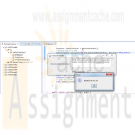
CIS355A iLab 6 Index Index2 and ThreeArrayLists Java Programs
$15.00CIS355A iLab 6 Index Index2 and ThreeArrayLists Java Programs
In this lab you will create three programs
Index.java
Index2.java
ThreeArrayLists.javaProgram files for each of the following three programs
Index
Index2
ThreeArrayListsiLAB STEPS
STEP 1: Index (10 points)
Write a Java GUI application called Index.java that inputs several lines of text and a search character and uses String method indexOf to determine the number of occurrences of the character in the text. This program is not case sensitive and both upper and lower case must be counted for.
Sample Program output: View Output DescriptionSTEP 2: Index2 (10 points)
Write a Java GUI application Index2.java based on the program in Step 1 that inputs several lines of text and uses String method indexOf to determine the total number of occurrences of each letter of the alphabet in the text. Uppercase and lowercase letters should be counted together. Store the totals for each letter in an array, and print the values in tabular format after the totals have been determined.
Sample Program output: View Output DescriptionSTEP 3: ThreeArrayLists (20 points)
Learn More
Write a program called ThreeArrayLists.java that declares three ArrayList objects referenced by the objects named priceList, quantityList, and amountList. Each ArrayList should be declared in main() and should be capable of holding a minimum of 10 double-precision numbers.
• The numbers that should be stored in priceList are 10.62, 14.89, 13.21, 16.55, 18.62, 9.47, 6.58, 18.32, 12.15, 3.98.
• The numbers that should be stored in quantityList are 4, 8.5, 6, 7.35, 9, 15.3, 3, 5.4, 2.9 4.8.
Your program should pass object references to these three ArrayList objects to a method named extend(), which should calculate the elements in the amountList ArrayList as the product of the corresponding elements in the priceList and quantityList ArrayList, for example, amountList.add(priceList.get(i) * quantityList.get(i)).
After extend() has put values into the amountList ArrayList object, create a method that displays the results of all three lists. Appropriate formatting techniques need to be used to produce a formatted output.
Tip: It is a good idea to create two arrays of type double to store the values that correspond to the price and the values that correspond to the quantity, for example:
double[] PRICE_ARRAY = { 10.62, 14.89, 13.21, 16.55, 18.62, 9.47, 6.58, 18.32, 12.15, 3.98 };
double[] QUANTITY_ARRAY = { 4.0, 8.5, 6.0, 7.35, 9.0, 15.3, 3.0, 5.4, 2.9, 4.8 };
Sample program output:
1) 10.62 * 4.0 = 42.48
2) 14.89 * 8.5 = 126.56
3) 13.21 * 6.0 = 79.26
4) 16.55 * 7.35 = 121.64
5) 18.62 * 9.0 = 167.58
6) 9.47 * 15.3 = 144.89
7) 6.58 * 3.0 = 19.74
8) 18.32 * 5.4 = 98.93
9) 12.15 * 2.9 = 35.24
10) 3.98 * 4.8 = 19.1




